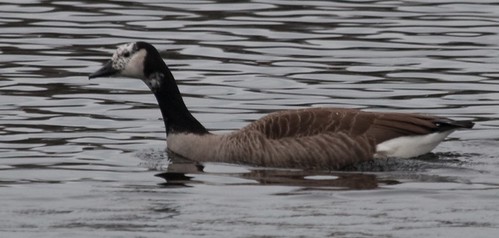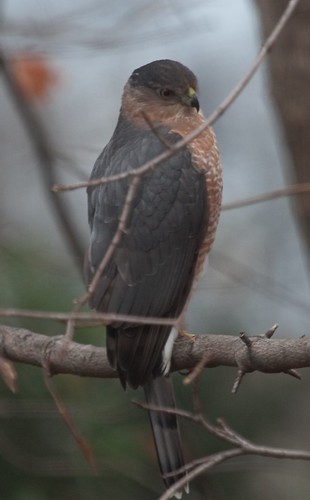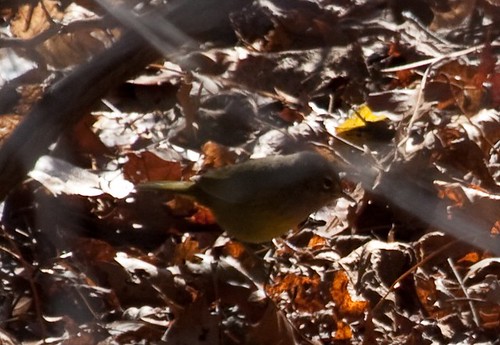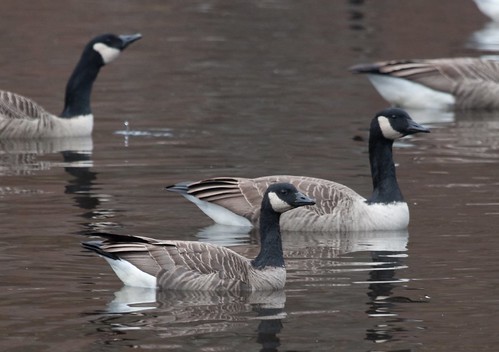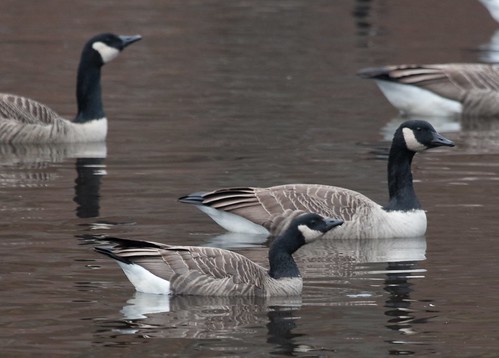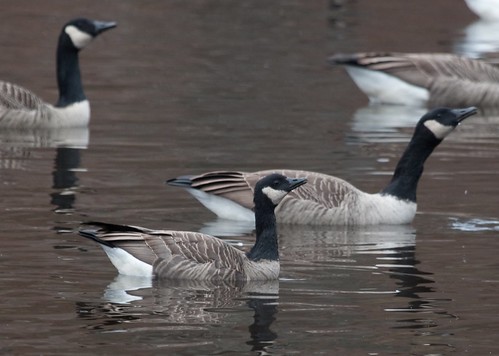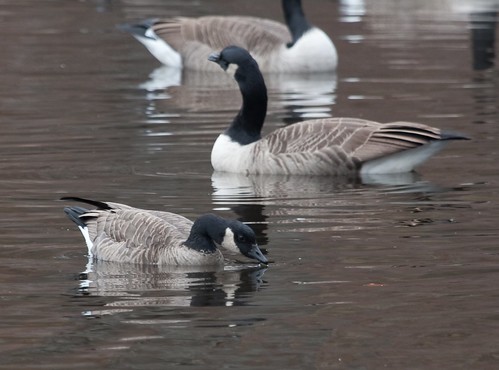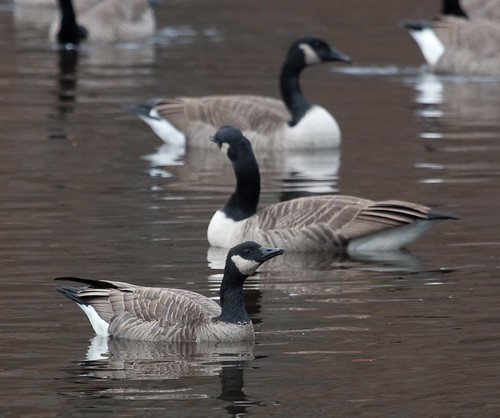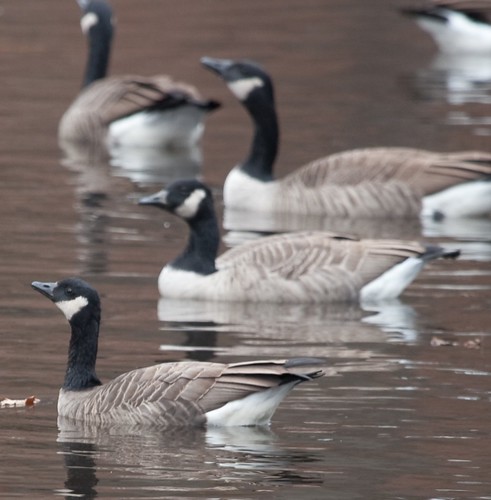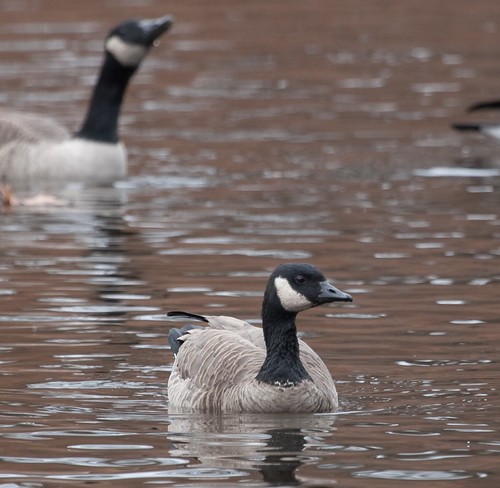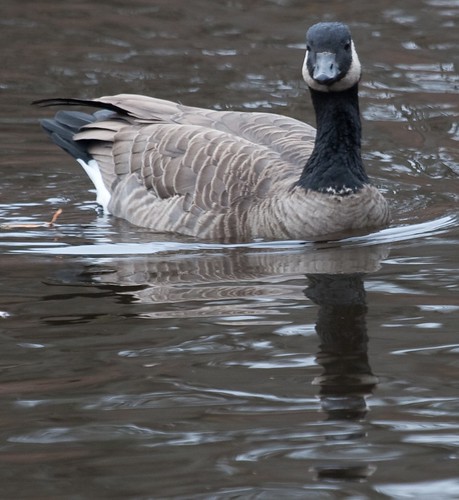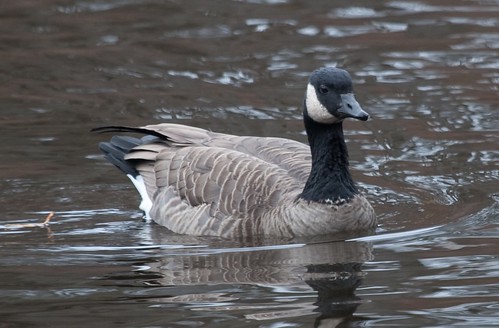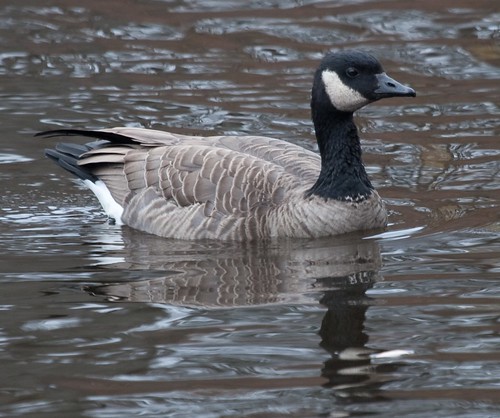Considering that most of the migrants have moved on and not all of the winter birds have settled in, November’s a pretty good month.
I planned on going to look for the MacGillivray’s Warbler that’s been hanging around the Fenway area today but decided to take a quick run around Dunback first. I parked by the tennis courts as I was thinking about checking the Waltham St. fields quickly as well. Walking in along the stream, there were quite a few sparrows including a couple Tree. After that it got pretty dull and I didn’t see anything of note walking all the way to the bridge. I headed back to check the pines and stopped to sift through some juncos at the intersection. A creeper almost in the brush was interesting, but the highlight was a Fox Sparrow that sat up chipping:


It eventually flew off (with a second one) and I continued on. Almost immediately I ran into Marj and James walking in. We enjoyed the creeper working on a tangle and then went back for the Fox Sparrows which immediately popped up. We worked down towards the bridge again but didn’t find too much. On the way back, I pointed out a kinglet in one of the fruiting trees and Marj gave a couple screech-owl calls. Birds flocked in and at one point we had 2 Fox Sparrows, 2 Baltimore Orioles, and an Eastern Towhee basically in a single field of view. Quite the combination. Once they moved on, we headed to the woods where there wasn’t anything beyond a pile of dove feathers. I decided not to check the fields and headed off.
After a quick stop at home to pick up my parents, we headed into Boston. Parking a little distance away from the gardens, we walked over quickly (stopping to look at a heron and take a quick scan through the piles of black ducks and mallards). Reaching the gardens, other people told us that the bird was seen earlier. We went to the other end but had no luck (and barely any birds at all). After circling a bit, we ran into Jane and Jane and I decided to check the other side of the river.
I ended up making a complete loop around, seeing a Blue Jay, 2 House Sparrows, and assorted waterfowl. I started through the gardens again when my phone rang. Apparently there was no reception in the area as this was the 4th call telling me that the bird was being seen. I rushed over but it had moved on.
I decided to start through the gardens again but staying within view if it popped up by the bridge again. However, three trees down I picked up two birds flitting in the branches. One was an Orange-crowned Warbler and the other was the MacGillivray’s! The views were fairly good, if brief as both birds moved constantly. Pictures were not so good:
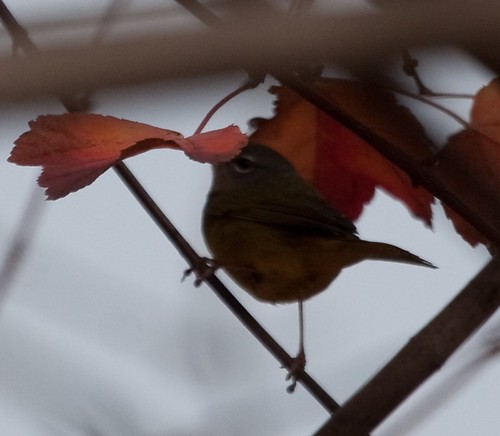
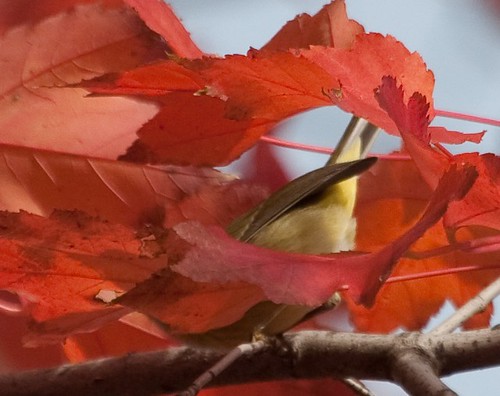
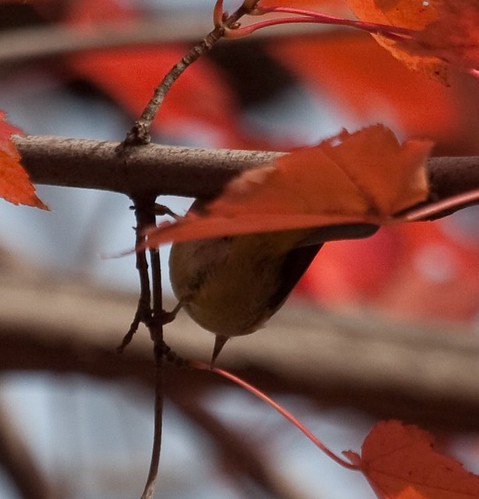
MacGillivray’s on top, 2 of the Orange-crowned below
The two Janes had gone off to look for the chat but had mentioned that they wanted to see the Orange-crowned, so we started to look for them. Unfortunately both warblers took off. I started through the gardens again as I had a brief view of the Orange-crowned on the other side. After not having any luck, we joined a crowd of people including a few that we hadn’t seen in quite some time.
We were getting close to running out of time on the parking meter, so we said good-bye to everyone and were about to leave when someone called out the bird again. Everyone headed over and got excellent views and it foraged among and below a large brussels sprout plant.
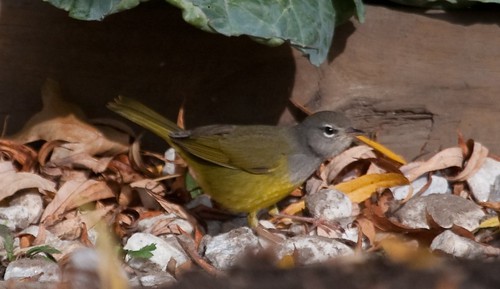
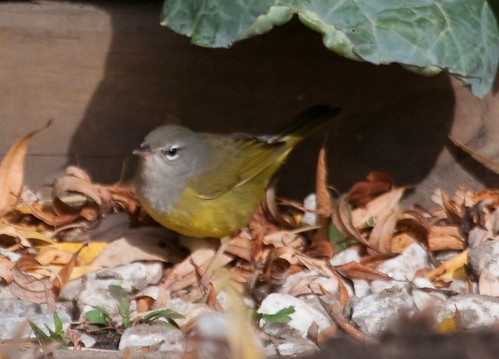
Once the bird moved out of sight, we realized that we absolutely had to go. Fortunately there was no meter maid in sight and the couple minutes extra weren’t an issue. The chat would have been nice (it was apparently popping up fairly regularly) but wasn’t a huge miss either (coincidentally, my first chat was here in 1999, either minutes before or minutes after my only other MacGillivray’s Warbler).
Although that made up most of the day’s highlights, a late afternoon trip to check out a few recently reported birds on the Charles was quite good as well. Most of the birds were still around, including 2 shovelers, 3 coots, and a Pied-billed Grebe at Charlesbank and the Ring-necked Duck at Purgatory Cove.
